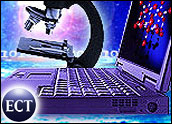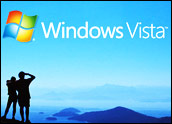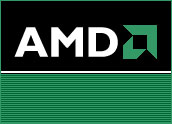
The summer is heating up for Intel as it prepares to propel three new products into the market in upcoming weeks.
Intel’s latest offerings include the Core 2 Duo chip for desktop PCs, Montecito chip for high-end servers and Merom chip for mobile notebooks. Shipment of the processors has already begun, and Intel is preparing to release several other chips, Bill Kircos, communications manager for Intel, told TechNewsWorld.
“There’s a lot of excitement about how stunning the performance is on these chips. It’s about us putting out a revolutionary type of processor. It’s a winner,” Kircos said, noting several positive tech reviews. “This is a really big launch because a whole new crop of PCs and laptops will be hitting the stores with these processors in time for back to school and before the holidays.”
On the Alert
The menu is one that analysts say will keep Advanced Micro Devices alert on the battlefield.
Intel has sustained an innovative advantage in the mobile market, though AMD has flexed its muscles in the desktop and server chip areas, according to Jim McGregor, principal analyst at In-Stat. Now, Intel is making a push there, he told TechNewsWorld. “Desktop servers and the PC market is the new battleground. It’s going to be a very competitive landscape for at least the next year.”
For Intel, the multiple product launches seem like a significant shift from desktops to mobile technology. “Eventually, AMD is going to have to come up with a new architecture to go from the ground up,” McGregor said, noting that the company told analysts at a recent conference that a new mobile architecture would be in production in 2007 but would not provide further details.
AMD is developing a new platform for the “PC enthusiast” market, according to Mike Field, desktop division market manager for AMD. “It’s a decidedly multicore processor, multithreaded application technology for the PC industry, and AMD believes it will have the best solutions for the market in 2006,” he told TechNewsWorld.
The company also is “planning an aggressive desktop price movement,” Field noted.
Power Struggle
Reducing power consumption will be another important focus in the future, McGregor said, especially in large enterprises with multiple racks of servers, where the more power they utilize, the less data they can store.
“You build an IP center with certain considerations in mind — environmental, cooling, overall space and overall power availability. All that is money,” he said. Increasingly, operational costs are more expensive than the hardware itself, and devoting 80 percent of a budget to operational costs is problematic.
“A lot of organizations deploy tens of thousands of servers, and each one takes up an amount of the electric bill,” Kircos said. “If you go to [them] and say these products use 30 percent less electricity and multiply that by thousands, that’s a lot of [cost savings].”
McGregor recognizes this new focus as a paradigm shift for the entire industry.
“We’ve spent the past 25 years trying to make everything high performance and fast. Now we need to take a step back and see how we drive a more efficient solution,” he said. “Performance per watt is a key measure for the future.”





















































